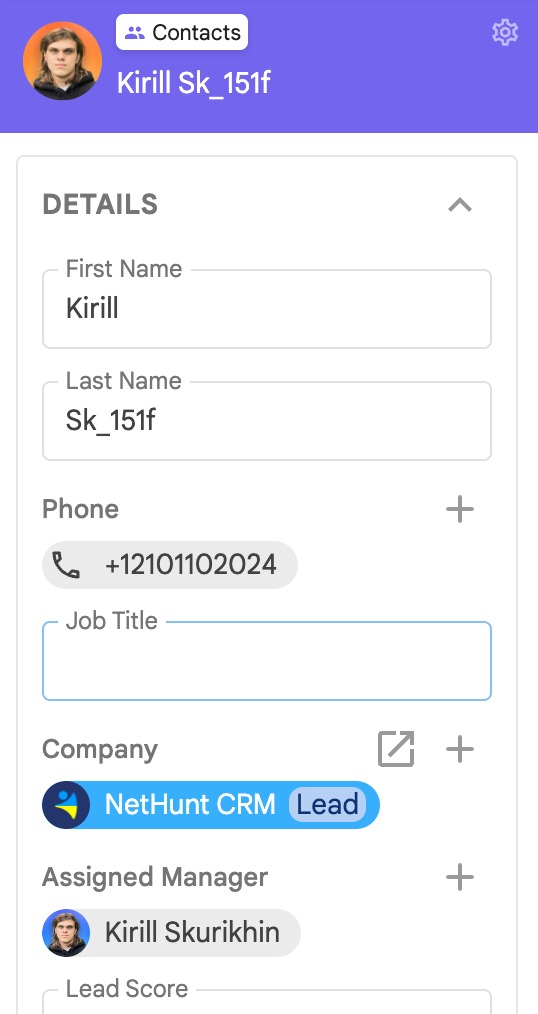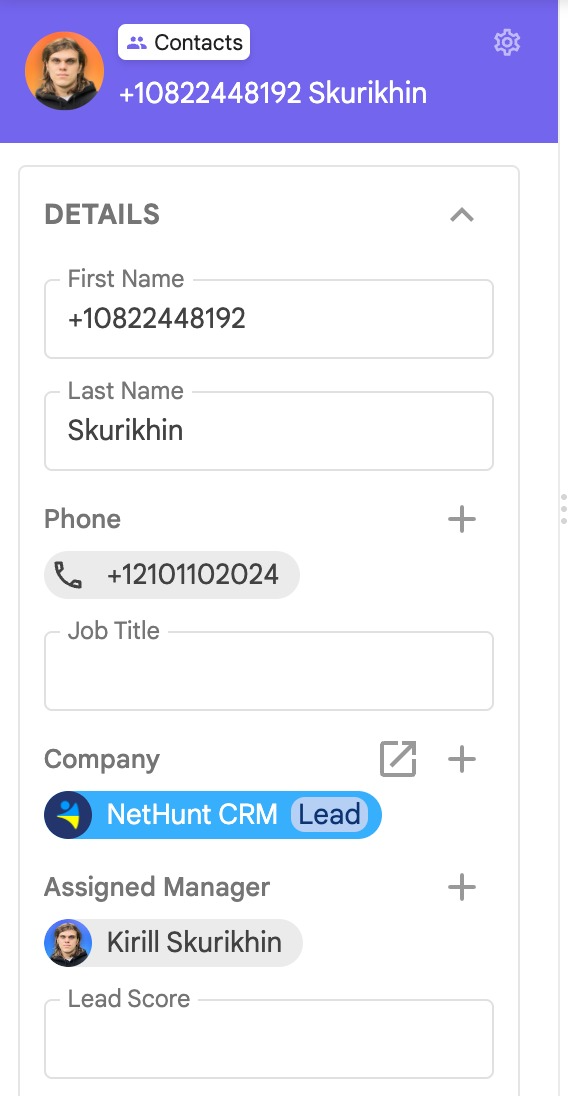- Do you struggle to keep track of your customers' interests and needs across multiple channels?
- Are you tired of wasting valuable time and resources trying to contact customers who have already moved on?
- Do you feel like you're constantly chasing data instead of closing deals?
If you answered “yes” to any of these questions, you need to revamp your approach to data management ASAP.
At the end of the day, they call data the 21st-century oil for a reason.
Just like oil, data is both extremely valuable and pretty much useless if gathered and processed incorrectly.
Failure to maintain a squeaky-clean customer database will strip you of the opportunity to make informed decisions, deliver personalised experiences, and drive revenue growth.
You get the gist. If you want your business to succeed, you must pay attention to your data cleanliness.
But here's the question... How does data get dirty?
The truth is, a lot of factors can contribute to it.
In this article, we’ll explore the eight most common reasons why customer data can become unclean, including human error, outdated data, and lack of governance. We'll also delve into the importance of clean customer data for businesses and share practical tips on ensuring customer data is spotless.
So, if you're ready to learn where all this mess is coming from, let's get started!
Why your customer data is messy: Understanding the top 8 causes
Whether your customer database is a mess, or whether you're trying to avoid that mess, these seven reasons for unclean customer data are worth watching out for.
Reason #1: Lack of standardisation
Lack of standardisation refers to the absence of consistent data definitions, formats, and structures.
When customer data is collected and stored in different formats, inconsistent across different systems, it becomes challenging to integrate and analyse the data effectively.
This inconsistency in data may result in variations in data type, naming conventions, formatting, and other important details, making it difficult to compare and analyse data across different sources.
For example, if different salespeople use different rules to format customer addresses, the database will flood with duplicate or missing records, making it impossible to get a clear view of your customers.
Besides, if you store customer data in different formats or with varying detail, it will be difficult to segment customers accurately for targeted marketing campaigns and sales outreach.
Lack of standardisation can also lead to inaccurate reporting, poor decision making, and lack of foresight of trends and insights.
For instance, if your company operates in multiple regions and uses different names for the same product or service, there will inevitably be confusion when analysing data related to sales or customer satisfaction. Finally, it may lead to customer dissatisfaction when incorrect or inconsistent information is presented to them.
Here are two customer cards to illustrate what small, albeit detrimental inconsistencies could appear in your customer database, if you fail to standardise the data entry process…
Notice how although the data in both cases is the same, the way it’s entered is completely different. This can result in a salesperson calling their prospect “Malfoy” as their first name instead of “Draco” in automated emails that use macros to personalise communication.
Standardising data entry ensures that everyone who inputs data follows a set of guidelines that promotes accuracy, completeness, and consistency, leading to cleaner, more reliable data.
Reason #2: Incomplete data
Incomplete data refers to missing or insufficient information that prevent businesses from gaining a complete understanding of their customers. Missing data could include information such as a customer's email address, phone number, or purchasing history, among others.
Data incompleteness is an issue that plagues many customer databases. Having incomplete data might take a salesperson a lot of time and effort to figure out how to contact their prospect or make specific leads downright unattainable.
Imagine the following scenario…
You get a new lead assigned, and when you go onto the leads customer card to reach out to them, you see this…
Aside from making you incredibly mad at the lead generation manager, situations like this mean you need to get data yourself. Annoying.
This situation isn’t even the worst that it could get.
Incomplete data can make it difficult to accurately segment customers or personalise marketing campaigns, leading to poor business outcomes.
Moreover, it can also have an adverse impact on customer experience. If a customer's contact information is missing or incorrect, it can lead to missed opportunities to engage them or resolve issues. This results in dissatisfaction and lost revenue.
Finally, incomplete data often leads to inaccurate reporting and analysis which can negatively impact decision-making. If a company needs to include data on the performance of a product, they may not be able to identify areas of improvement or optimise their sales strategy.
Additionally, incomplete data may lead to biassed or incomplete conclusions, causing businesses to make decisions based on false information.
Reason #3: Human error
Human error simply means making mistakes while doing a task or process. When it comes to managing customer data, human error can happen during manual data entry, where people might make typos or enter data in the wrong field.
This is the most forgivable out of this list. We’re all people, and people sometimes make mistakes. This mistake could’ve been as simple as misspelling John as “Jhon” on the customer card, which isn’t too big of a problem.

A big problem is when human error results in a part of the phone number or email address being mistyped, or the whole phone number/ email address is entered into the wrong customer card.

In cases like these, sales outreach won’t be an option.
Sometimes, human error can result in the entire lead having to be sent back for regeneration, to have the data filled in correctly again.
Reason #4: Out of date data
Outdated data refers to customer data that has not been updated to reflect current information or changes in customer behaviour. This can include out of date contact information, expired product or service preferences, or outdated purchase history.
Regularly updating data is important to avoid inaccuracies and mistakes.
For example, if a customer changes their phone number, address, or email, forgetting to update this information in the database can cause communication issues and missed opportunities to engage them.
Outdated customer data can also negatively impact marketing campaigns, leading to irrelevant or poorly targeted messages that result in negative customer experiences and decreased engagement.
For example, if the data about which payment plan the customer is using doesn’t get changed when the customer upgrades, the salesperson might provide them with inaccurate information when addressing an issue.
Additionally, using inaccurate or outdated data for decision-making can lead to poor outcomes and wasted resources. If sales forecasts are based on outdated sales data, it can lead to incorrect predictions, resulting in inefficient resource allocation or missed opportunities.
It's crucial to keep your data up-to-date to ensure the success of your business operations.
Reason #5: Data duplication
Data duplication refers to the existence of multiple copies of the same data within a database. Data duplication occurs when the same customer information is entered multiple times, often due to human error or system glitches.
Data duplication can occur at various stages of the data management process, such as during data entry, data migration, or system integration. It can also result from incomplete or inconsistent data validation processes.

Failing to address duplicates in customer data can result in severe consequences for your business.
For one, duplicate records can skew data analysis and make it challenging to gain a comprehensive understanding of customer behaviour or business performance.
They can also lead to communication issues and decreased customer satisfaction. If businesses use duplicate records to send marketing messages, they can end up sending multiple messages to the same customer.
Inconsistent data can also lead to confusion and distrust in a business's ability to manage customer data, ultimately resulting in decreased customer loyalty.
Finally, managing duplicates can be rather annoying and time-consuming for your sales reps. It takes up valuable resources and delays critical business operations.
It's crucial to invest in a robust CRM system like NetHunt CRM that helps you identify and remove duplicates automatically.
With NetHunt CRM you can ensure clean and accurate customer data, leading to better decision-making, improved customer experiences, and, ultimately, more profitable outcomes for your business.

Give NetHunt CRM a try — the first 14 days are on us 👀
Reason #6: Lack of data governance
Data governance refers to the processes, policies, and guidelines that businesses put in place to manage their data effectively.
Without clear policies and procedures for collecting, storing, and using customer data, employees may make mistakes or engage in unauthorised activities. Sometimes they might even go as far as sharing data with third parties without proper consent.
This can lead to data inaccuracies, duplication, and loss of data quality, making it challenging to obtain actionable insights and make informed decisions.
Moreover, lack of governance increases the risk of data breaches and regulatory non-compliance which can harm the reputation and credibility of the organisation.
To address this, businesses need to…
- Establish clear data governance policies, procedures, and roles to ensure consistent data quality standards and practices across the organisation.
- Invest in appropriate technology, such as a CRM, to automate and enforce data governance policies, minimising the risk of errors and unauthorised data activities.
- Ensure that customer data is consistently accurate, complete, and secure, allowing organisations to obtain actionable insights and make informed decisions.
Reason #7: Integration issues
CRM integrations are great! They help businesses secure more leads from various sources, as well as bring all the tech stack together. However, sometimes integrations mess up the data that they’re scraping, and you’ll end up with customer records that aren’t correct.
Integration issues can cause customer data to become unclean by creating inconsistencies and duplication across different systems. When multiple systems are involved, data may be duplicated or out of sync, leading to discrepancies in customer information.
Suppose you implement a solid CRM from a vendor that cares about their customers such as NetHunt CRM. In that case, you will have significantly fewer issues with integrations, the customer success team will be there to help you should you encounter an error.
Reason #8: You use spreadsheets or notes to manage your customer data
The aforementioned reasons for messy data are applicable in those scenarios when you already use dedicated software to manage fit. For instance, if your data entry is manual, you haven't configured the required fields or enabled duplicate prevention functionality.
However, if you store information about your leads, customers, and deals in a digital spreadsheet or — gasp! — in a physical notepad, it's safe to say that your situation is worse. Much worse.
If you don't leverage a dedicated data management tool, you're leaving yourself vulnerable to all the mistakes we've discussed
Compared to a CRM system, spreadsheets and their paperback counterparts are inferior. They lack the features necessary to manage customer data effectively…
1. They can't automate data entry.
2. They don't have a centralised database, leading to data inconsistencies and inefficiencies.
3. They don’t offer the opportunity to cross-refer records.
4. They lack proper security measures, leaving sensitive customer data at risk of being lost or stolen.
5. They don't scale well with business growth, which can lead to lost opportunities and decreased efficiency.
6. They cannot efficiently store an audit of changes in client cards.
For more information on this topic, check out our article on things your teams can't do with a spreadsheet CRM.
Why is it important to keep your customer data clean?
As a business owner, you're probably aware of the vital role your customers play in the success of your venture. You're likely collecting a plethora of data on them — their contact details, purchasing history, preferences, and more.
However, it's crucial to remember that if this data isn't accurate, organised, and up-to-date, it's no good to you. Think of it like trying to operate an engine with contaminated oil — it might work for a while, but ultimately it causes significant problems.
So what is "clean" data? Essentially, it refers to data that is accurate, current, and logically organised.
For instance, if a customer has moved to a new location, their former address is of little value to you. Likewise, having multiple entries for the same customer, each with varying spellings or incomplete information, can be a logistical nightmare.
If your customer data isn't clean, you're wasting a lot of resources, including time and money.
For example, you might be sending promotional materials to the wrong address or contacting customers who have already expressed disinterest. Moreover, if you cannot easily analyse your data, you might miss out on vital insights that could help you improve your business.
However, even more critical is the risk to your reputation. Imagine sending an email to a customer that begins with "Dear [First Name]," only to address them as "Bob" when their name is actually "Sue."
Although it may appear to be a minor error, it can make you seem inattentive or disrespectful.
We have an article on our blog where we tell you all about how to make sure your customer data is clean and correct. Check it out!

That's it!
We're calling on all businesses to take the necessary steps to ensure their customer data is spotless. Implementing policies, investing in the right technology, and keeping data up to date are all keys to ensuring your data is accurate, reliable, and ready to use.
By prioritising clean customer data, you can gain a better understanding of your customers, make informed decisions, and ultimately drive revenue growth.
So, let's roll up our sleeves and start cleaning up our customer data!
Table of Contents
Crack the sales formula with CRM Lab
Twice a month, receive actionable CRM content to your inbox.



